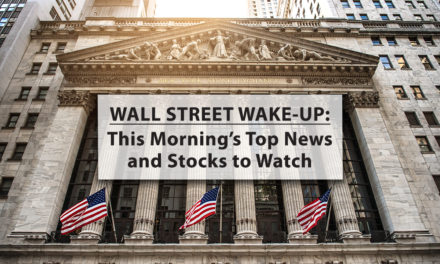Editor’s note: The Money and Markets staff is attending our annual work retreat today through Friday and the normal Closing Bell, by staff writer Matthew Clark, will return Monday.
The Dow Jones Industrial Average is surging 1,000 points, or 4%, on hopes for more stimulus measures to counteract virus effects and primary wins by Joe Biden. Congressional leaders agreed on an $8.3 billion bill to battle the coronavirus, and investors are anticipating more central banks around the world will offer stimulus following the Federal Reserve’s rate cut Tuesday.
Health care companies helped lead the gains after Biden solidified his contender status for the Democratic presidential nomination. Investors see him as a more business-friendly alternative to Bernie Sanders. The S&P 500 jumped 3.9% and the Nasdaq rose 3.3%.
The rally’s momentum accelerated around midday after House and Senate leadership reached a deal on a bipartisan $8.3 billion bill to battle the coronavirus outbreak. The House was set to vote on the measure later Wednesday. Senate leaders were pressing for a vote in that chamber by the end of the week. The measure’s funds would go toward research into a vaccine, improved tests and drugs to treat infected people.
“The fact that you get an $8 billion bill, that’s money that will be spent, hopefully, on something that really will have an impact on mitigating the effects on the economy,” said Tom Martin, senior portfolio manager with Globalt Investments.
Investors are also anticipating other central banks will follow up on the Federal Reserve’s surprise move Tuesday to slash interest rates by half a percentage point in hopes of protecting the economy from the economic fallout of a fast-spreading virus. Canada’s central bank cut rates on Wednesday, also by half a percentage point and citing the virus’ effect.
The S&P 500 rose 4.2% by the closing bell. It has recovered all of its losses from the day before, when worries flared about how effective rate cuts can be in a health crisis. The Dow Jones Industrial Average surged 1,173 points, or 4.5%, to 27,090 and the Nasdaq rose 3.9%.
Some measures of fear in the market eased, but Treasury yields fell again toward more record lows in a sign that the bond market remains concerned about the economic pain possible from the fast-spreading virus. Companies around the world are already saying the virus is sapping away earnings due to supply chain disruptions and weaker sales, with General Electric becoming the latest to warn its investors.
Even though many investors say they know lower interest rates will not halt the spread of the virus, they want to see central banks and other authorities do what they can to lessen the damage. The S&P 500 sank 2.8% on Tuesday after a brief relief rally triggered by the Fed’s rate cut fizzled.
“Monetary policy can only take us so far, but at least it’s a step,” said Jack Ablin, chief investment officer at Cresset. “Investors will take comfort in coordinated central bank action. I take comfort in knowing this isn’t the plague, we’ll eventually get through this.”
The Bank of England has a meeting on March 26 on interest rates. The European Central Bank and others around the world have already cut rates below zero, meanwhile, which limits their monetary policy firepower. But economists say they could make other moves, such as freeing up banks to lend more.
An indicator of fear in the market, which measures how much traders are paying to protect themselves from future swings for the S&P 500, eased by nearly 13% in afternoon trading. The price of gold, which tends to rise when investors are feeling fearful, also dipped $1.40 to $1,643 per ounce.
But the bond market, which was among the earliest to flash red flags about the economic pain from the virus, was still showing caution. The yield on the 10-year Treasury recovered after falling to 0.98% and was unchanged at 1.01%. On Monday, it sank 0.08 percentage points and dipped below 1% for the first time in history. Yields fall when investors are worried about weaker economic growth and inflation.
The two-year Treasury yield, which moves more on expectations for Fed actions, slumped to 0.65% from 0.71% as traders increase bets that the Fed will cut rates even deeper this year.
Health care stocks in the S&P 500 jumped 4.9% for the biggest gain by far among the 11 sectors that make up the index. UnitedHealth Group rose 10.7%, Anthem jumped 14.6% and Cigna climbed 10%.
A Biden nomination would be more welcome on Wall Street than a nod for Sanders, who is campaigning on a proposal to enact “Medicare For All.”
“It’s probably a trend toward more of the same in terms of the market and the regulatory and business environment,” said Ablin. “I don’t think investors are looking for revolution.”
Technology stocks also drove much of the gains Wednesday. Apple climbed 3.4% and Microsoft rose 2.1%.
Airlines, which have been among the hardest-hit travel-related stocks in recent weeks as the coronavirus fears intensified, were mixed. American Airlines fell 0.4% and Delta Air Lines rose 3%.
Cruise ship operators continued to pile losses, however. Norwegian Cruise Line fell 3.2% and Royal Caribbean Cruises slid 1.6%. Carnival dropped 0.3%.
Data reports released Wednesday painted a U.S. economy that was still holding up, at least as of last month. The country’s services industries grew at a faster rate last month than economists expected, according to a report from the Institute for Supply Management. Hiring at private employers was stronger than expected in February, according to a report from payroll processor ADP, though slower than January’s pace. That could be an encouraging sign for the comprehensive jobs report coming from the government at the end of the week.
Markets have been on edge for two weeks, with the S&P 500 down 8.5% from its record on Feb. 19, amid worries about how much economic damage the coronavirus will do. The big swings in recent days will likely continue until investors get a sense of what the worst-case scenario really is in the virus outbreak. They need to see the number of new infections at least slow its acceleration, analysts say.
Indexes jumped on Monday, and the Dow had its best day in more than a decade on rising anticipation for coordinated support from the Fed and other central banks. That followed a dismal week that erased gains for 2020.
The tide rose for stocks around the world on Wednesday. In Europe, Germany’s DAX returned 1.2%, the French CAC 40 rose 1.3% and the FTSE 100 in London gained 1.4%. In Asia, South Korea’s Kospi jumped 2.2%. Japan’s Nikkei 225 inched up 0.1%, the Hang Seng in Hong Kong slipped 0.2% and stocks in Shanghai rose 0.6%.
© The Associated Press. All rights reserved.




